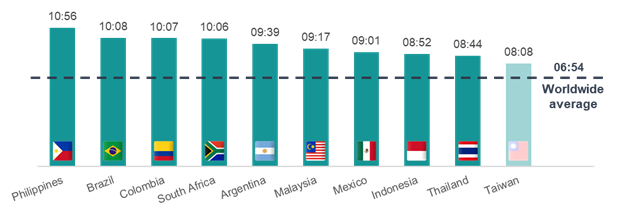A brief history of FinTech: from origins to the next billion
The forefront of digital growth with Ken Toyoda

Fintech’s disruptive roots
From its humble emergence in 2005, the term “fintech” (financial technology) has arrived at saturation in finance parlance, with scarcely an article on innovation or the future of the industry escaping a reference. To be a “fintech firm” now means to be part of a USD 7+ trillion corner of the finance market with an expected growth rate over 25% per annum.
But what makes firms fintech firms? The word itself would suggest it’s about using technology to improve and automate financial services. In its earliest days, fintech did exactly that within the banking system, improving information flows to banks and trading companies, and then enabling payments between them. It was the advent of the internet and, further, the instant connectivity brought by smartphones, that brought fintech into the hands of consumers and small businesses and transformed into the disruptive force of today. With 50% of the global population owning a smartphone, the ubiquitous “there’s an app for that” mentality has brought a digital revolution in the way that people access services, not least the world of financial services.
Time Spent on the Internet, Top Ten Countries (per day and across devices)

Today, there are 4.7 billion internet users worldwide, and of those users globally, Southeast Asia, Latin America, and Middle East & Africa represent the fastest growing and most engaged third of those users Just as names like Paypal or N26 have become household names in developed markets, the connectivity of the large populations across these growth markets suggest that an increasingly large number of fintech successes will come from these regions.

Fintech for all What makes fintech different from the past is the promise that innovation will provide solutions for all, including the 1.7 billion people in emerging markets without a bank account. Prior to the internet and smart phones, technological improvement tended to benefit the banks themselves and their privileged customers. Fintech, at its best, democratizes the finance industry by making banking and other financial services, including insurance, more accessible and affordable, improving the lives of billions of people.
The main way fintech does this is by removing the barriers to access that exist today. In traditional banking, many processes and transactions require a physical visit to the bank, restricting access for people living in rural areas. In addition, many are excluded due to high transaction and processing costs. For these individuals and SMEs this means no access to credit and loans and staying financially excluded.
Digitalization and transformation of traditional financial systems can change that. Replacing brick and mortar branches with digital finance solutions will drastically reduce cost and increase accessibility and convenience for everyone. Some examples from responsibility’s current investment portfolio include: responsAbility part of successful fintech IPO | responsAbility RenewBuy raises additional equity funding from responsAbility | responsAbility What is needed in FinTech going forward To find out more concretely what is needed to solve the pain points for consumers and businesses in emerging markets, we spoke with Ken Toyoda, who is currently working on a digital growth strategy that will drive investment in local digital companies in emerging markets.

Ken Toyoda is a Managing Partner at Next Billion Capital Partners, a technology investment firm focused on emerging markets, where he oversees global strategy and deal sourcing in Latin America. Ken is passionate about investing in the digital economy as a means to democratize essential services; he has led investments in over 15 technology companies across global emerging markets. Previously, Ken was responsible for sourcing direct technology investments in Latin America and Southeast Asia on behalf of the International Finance Corporation (IFC), the private investment arm of the World Bank; he began his career at Fortress Investment Group in New York. Originally from Tokyo, he holds a BA from Harvard University and an MBA from the Wharton School.
Q: What does the investment universe of digital commerce and fintech in emerging markets look like – opportunities, risks, challenges? What are the key geographies that you look at and why?
Ken: In short, we see two major gaps that make the digitalization of Southeast Asia, Middle East & Africa, and Latin America a generational investment opportunity. The first is that internet access and usage in these regions is already massive and growing, but the spread of impactful digital services is still in its early days. Of the approximately 3 billion people in these regions, 1.7 billion – 55% of the total population - are internet users; moreover, they are the most engaged segment globally (by time spent on social media). At the same time, less than 1 out of 3 people is adequately banked, meaning that despite rapidly growing connectivity, technology is still not enabling access to key services, financial and otherwise, for large swaths of the population.
The second gap is that despite the need for continued growth in the digital economy, the capital to fund the local companies that drive it is still lacking. Local winners continue to emerge in building the digital economies of emerging markets, and yet capital to fund them remains scarce relative to developed markets. Yes, local funds are raising larger funds and yes, global pools of capital are taking an interest in the pre-IPO rounds of these companies. Nevertheless, at the growth stages between local and global funding, we see an undeniable opportunity to help the next wave of companies reach orbit.
So, there you have it: unmet demand for companies offering digital services, and unmet demand for the capital to fund them. With a disciplined approach regarding which digital business models to back and deep knowledge of local markets, it’s really a generational opportunity to invest in the digital economy leaders of tomorrow. Q: What are the main pain points that people in these markets face? Can you give an example of a company that has a great solution for one of these pain points?
Ken: There are so many pain points, but the most fundamental is lack of convenient access to essential services: financial, health, and education, among others.
In many places in Latin America, for example, the practice persists of lining up at the ATM on payday in order to withdraw the entirety of your paycheck, make the necessary payments in cash, and store the rest under your mattress. The outcome is that though these salaried employees are “banked”, they are not enjoying the benefits of being part of the financial system.

Minu is a company in Mexico that is changing this dynamic; through its salary-on-demand service, employees at Minu’s employer partners can access their earned wages at any time. The effect is transformative: employees no longer have to turn to friends and family (or predatory lenders!) to fund emergencies between paychecks. And building on its relationship with employer and employee, Minu also offers other benefits such as savings and loan products.
Q: What is unique about your approach to investing in this sector? What differentiates your strategy in the flood of capital that is pouring in?
Ken: Our fundamental thesis as a technology investor in emerging markets is that the dynamics among their rapidly growing digital economies are familiar enough to one another that we can recognize patterns and draw lessons between them.
There are many smart founders and investors in emerging markets who are looking to developed markets for inspiration about which digital businesses to build and invest in; likewise, global pools of capital are increasingly investing in digital business models familiar to them from developed markets, but in emerging markets.
And while we are strong believers in the diffusion of business models between global “North” and “South”, we see equal value in tracking these models as they start to scale across different emerging markets. In doing so, we prioritize the most promising models for emerging markets, build expertise as companies build them in different regions, and bring something different from the table when we eventually invest: “Yes, A and B may be your role model companies in the US, and you should learn from them – but here are your peers X, Y, and Z in other emerging markets. They are walking the same path as you, now, and we’ll help you learn from them even more.”
Q: How does your strategy contribute to targeted impact in financial inclusion/digital inclusion?

Ken: Our strategy is to serve millions of low-income households, SMEs, and women in emerging markets with digital tools that increase access to key goods & services and improve financial health. Our goal is to contribute to a digital economy that is truly inclusive. In some cases, that means investing in companies that are directly inclusive in that they themselves provide access to previously inaccessible services. In many others, it means investing in companies that leverage technology to improve distribution, lower the cost of access, or level the playing field for segments of the market that were previously ignored.
In many emerging markets, over 80% of retail sales occur through small, independent stores where people in the community buy household essentials like rice and cooking oil. These store owners use pen and paper to manage their businesses; something as simple as a digital ledger can increase productivity, allowing these SMEs to grow their businesses and better serve their community.

In particular, the digital economy unlocks the potential of women in emerging markets. Technology companies, compared to the traditional economy, both employ women and offer more products with outsize benefits to women. For example, social commerce platforms allow people to resell things like apparel and electronics among their social networks during their free time; 80% of the resellers on Meesho in India are women.
Q: What is the most important thing for investors to know about both the need for investment in this space (impact) and the opportunity for investment in this space (risk-return)?
Ken: That the opportunity to achieve those two things – both impact at scale and attractive risk-adjusted returns – lies in the pain points that digital technology companies are mitigating and solving for in emerging markets.
My argument has always been that digital technology has diminishing marginal returns. Simply put, each new app that we install on our smartphones improves our lives by just a little bit less – for example, next-day grocery delivery was life changing; same-day grocery was great; two-hour delivery was convenient; and now we are seeing companies duke it out for 15-minute delivery. But at that point, how much of an impact are you really having on your users?
In that sense, in emerging markets, we are still early enough in the evolution of the digital economy that each new company has the potential to massively improve the lives of its users. Add in the fact that the blueprints on how to solve these paints points have been written by companies in developed markets – and are just waiting to be adapted to emerging markets by local entrepreneurs and companies – and you have a situation where you can invest in de-risked companies that are having meaningful impact on a mass market.
References: SWIFT history | SWIFT - The global provider of secure financial messaging services, Internet - Our World in Data, Strategy Analytics: Half the World Owns a Smartphone | Business Wire, Home | Global Findex (worldbank.org), McKinsey Global Institute, Digital Finance for all: Powering Inclusive growth in emerging economies, Home | Global Findex (worldbank.org)